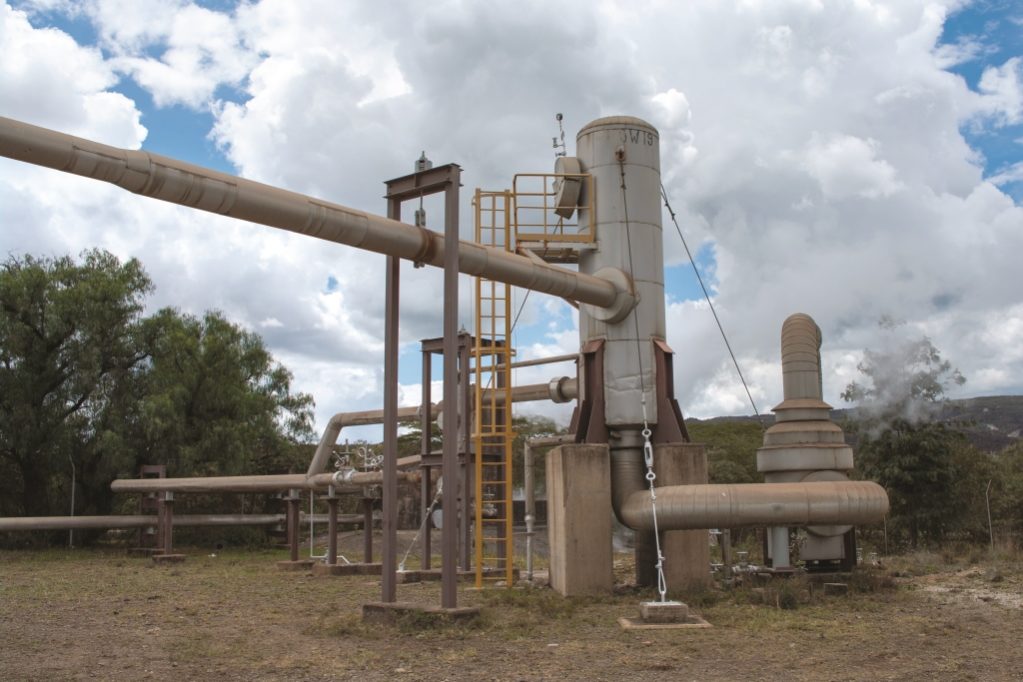Tucked inside Kenya’s Rift Valley are the Olkaria geothermal fields. A mix of a national park (Hell’s Gate National Park) and steam wells, the fields are powering Kenya’s growing electricity demands.
The first steam wells, also known as geothermal wells, in Kenya were built more than 30 years ago. Then, there was little regard for geothermal power – energy generated from natural steam from the earth. It was regarded as one of the many expensive ventures by the government.
Today, the focus on renewable energy has never been greater in Kenya. Several billionaires attended the Global Entrepreneurship Summit in July in Nairobi to explore investing in renewable energy in the East African nation.
“Investors in this initiative have chosen Kenya because the government is ready to listen to ideas and help implement them,” said Sir Richard Branson who led a delegation at the summit.

Loading...
Energy demands in Kenya are growing. This is largely due to renewed investor confidence in the country as well as the government’s improving retail consumer connectivity. This has seen the government work on an ambitious strategy to generate 5,000 megawatts (MW) by 2018.
Out of this, renewable energy is expected to take center stage as hydroelectric and fossil fuel generation are cut significantly.
In 2006, Kenya created the Geothermal Development Company to speed up the development of geothermal resources. The firm took shape through funding from the national treasury to offset the cost of drilling steam wells.
However, much of the work has been done by listed state corporation, Kenya Electricity Generation Company, popularly known as KenGen.
“Kenya is taking off and energy is the anchor engine. As a power generating firm, we have now developed a robust strategic plan heavily hinged on geothermal power,” says Albert Mugo, the Managing Director of KenGen.
According to government statistics, Kenya has a total power demand of slightly more than 1,500MW. The installed capacity is 2,000MW. Out of this, geothermal power contributes around 579MW, which translates to 44% to the national grid.
“We have a potential of 10,000MW of geothermal power in this country. We can still do more in terms of contribution to the national grid,” says Mugo.
The challenge in boosting geothermal power is financing. It is estimated that drilling one well costs between $8 and $10 million. To date, Kenya has more than 260 geothermal wells, mostly in Olkaria.
“The greatest challenge in this geothermal business is the perceived risk in exploring the steam wells,” says Mugo.
Apart from KenGen, other geothermal power producers have joined the fray, such as OrPower and Akira.
Kenya is ranked eighth in the world in geothermal positioning and first in Africa.
However, the focus is not only on geothermal energy. There is also interest in wind energy and solar power. While the two are at a nascent stage, Kenya has commissioned its first large-scale wind power project.
The Lake Turkana Wind Power Project (LTWP) farm site covers 40,000 acres and is expected to contribute 300MW to the national grid. When complete, it will become Africa’s largest wind power plant. Another wind project, managed by Aeolus Kenya, is expected to take shape soon. Located in central Kenya, it is expected to feed 60.8MW to the national grid.
The government, through KenGen, is also prospecting on a 400MW wind farm. This is scheduled for implementation in early 2016. Like the abundant geothermal energy sites, Kenya also has an area close to 90,000 square kilometers with excellent wind speeds of at least 6m/s.
Solar power is taking root with a number of companies entering the household market. This has seen many homes, especially in rural areas, replace the national power grid with solar energy.
“This growth in use of solar energy by household is largely attributed to the cost advantage. Solar power is much cheaper than national grid power,” says Robert Pavel Oimeke, the Director of Renewable Energy at the state-run Energy Regulatory Commission.
It seems that Kenya’s green energy growth plan is leading the way in Africa.
Loading...
